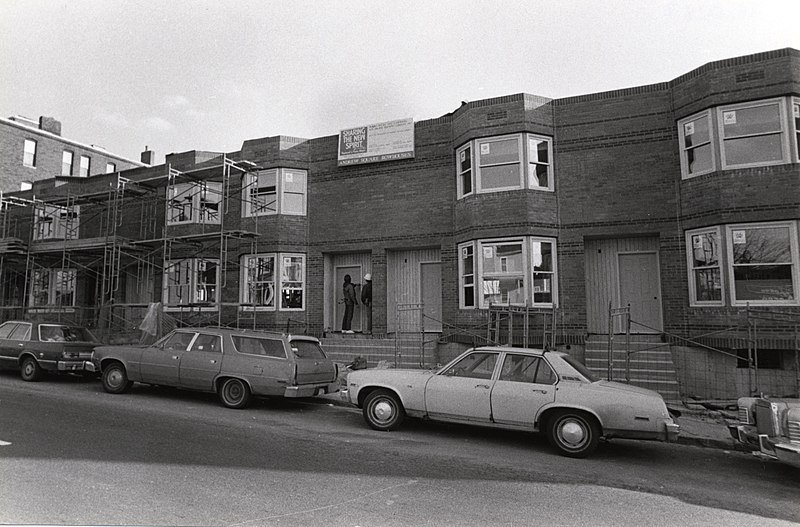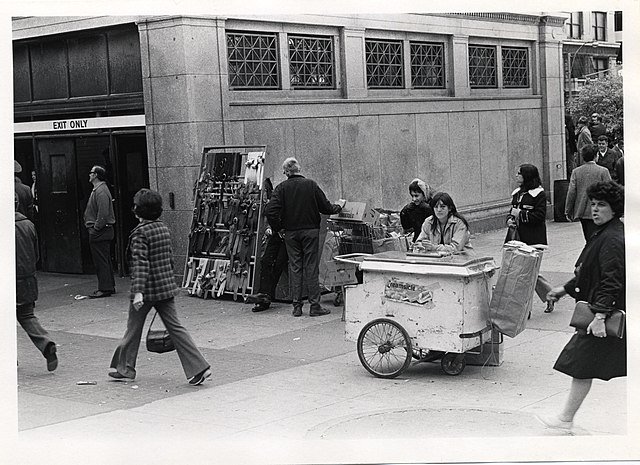
Compact City and Mayoral Entrepreneurship
The “compact city” is one of the key responses of urban policy for tackling the pressing challenges that cities are facing, such as environmental sustainability, economic viability, and social cohesion. Nonetheless, understanding Japan's compact city policies requires considering the historical trajectories of past events and decisions made by policymakers.

Transforming a Day-Laborer’s Quarter into a Service Hub
This study analyzes the transformation of Kotobuki in Yokohama, Japan, from a day laborers’ quarter to a service hub using public choice and neo-Hegelian theories. It aims to address gaps in understanding the role of city government in welfare provision, which has often been overshadowed by the focus on civil society’s contributions. By conducting in-depth interviews with city government officials and civil society personnel, the study explores Kotobuki’s unique evolution into a welfare center through the lenses of these analytical frameworks.

60.4
Issue 4 of our anniversary volume features an introductory essay by managing editors Maureen Donaghy (Rutgers University-Camden) and Yue Zhang (University of Illinois-Chicago). We revisit Larry Bennett’s “Harold Washington and the Black Urban Regime,” which was published in Urban Affairs Review in 1993.

Red, Blue, and Going for Gold
Hosting the Olympics in U.S. cities comes with unique challenges regarding planning and execution, given that due to the federalist system of government the responsibility of planning and hosting the games largely falls on state and local governments (Schimmel 2006). Many city officials now question the benefits of hosting the Olympics, given that many games have run over budget and residents of potential host cities have organized against the games, including recent bids from Boston and Chicago. Residents of Olympic host cities and potential host cities have expressed concerns regarding increased public spending, construction of Olympic facilities altering the public landscape, overcrowding, and gentrification of urban neighborhoods.

Tribal Politics or Discerning Voters?
The substantial influence of partisanship on voting behavior at the national level is widely studied and agreed upon. But to what extent does partisanship influence voting behavior at the local level? While some research indicates local elections may be similar to national elections in terms of partisan influence, there are reasons to be skeptical. Local elections typically are nonpartisan; even if they are not, issues may not fall neatly along party lines.

High and Dry
Recent hurricanes, floods, and wildfires across the United States highlight the devastating effect of climate change on individuals and households. Renters and households with low incomes are disproportionately exposed to and harmed by these disasters in many ways – but there are still open questions about the effects of these disasters, specifically on rents. On the one hand, disasters often lead people to leave affected areas, which may lessen demand for housing and lead to lower rents. On the other hand, disasters generally damage housing units, rendering some unusable, which may lower supply and lead to higher rents.

Collaborative planning in the context of deindustrialization
In the early 1990s, along the once-industrialized Mahoning River in Northeast Ohio, a small-town mayor faced a challenging set of forces when trying to solve local problems. With the steel industry long gone, the town’s future had been hindered by a series of low-level dams and industrial contamination in and along the river. These and other serious problems extended across the region – through other small, river-adjacent towns and nearby Youngstown.

60.3
Issue 3 of our anniversary volume features an introductory essay by managing editors Christina Greer (Fordham University) and Tim Weaver (University at Albany). We revisit Elinor Ostrom’s “The Social Stratification-Government Inequality Thesis Explored,” which was published in Urban Affairs Review in 1983.

Working in the crisis
While the COVID-19 pandemic was, first and foremost, a health crisis, it presented a profound challenge to local economies around the world. Day-to-day business was suspended, and employers were forced to adapt to rapidly evolving working conditions. An external, global pressure issued an abrupt shock to the economic system of communities. While certainly profound and currently the first-to-mind example of economic shock, it is just one of many global pressures that local economies have had to contend with. In the face of global forces, how do local economic practitioners react and empower their communities to shape their own economic destiny?

Reform and Community Level Participation
Eleven years after the official over turn of Stop, Question, and Frisk (SQF) in New York City there is still a debate about the appropriate ways for officers to interact with citizens on the street – and what information they have a right or obligation to record. How police stops impact citizens and their wider communities is of critical importance, but difficult to fully understand until long after policies have unfolded. However, within the bounds of privacy, detailed data on police actions and where they occur can provide the needed information to trace back how effective policy changes are and what consequences they have.

The Price of Losing Autonomy
Amalgamations have gained popularity worldwide as important strategies for enhancing administrative efficiency and addressing a variety of governance challenges, including fiscal constraints, demographic shrinkage, and fragmented urban governance. This trend has also spurred a surge in empirical research to assess the actual impacts of such territorial reforms across diverse political and social contexts. One noticeable pattern that emerges from the literature is that small and politically marginalized units are often underserved after amalgamations, as a result of their diminished political importance in the post-amalgamated jurisdictions.

Place-Based Policy and Neighborhood Business Density
Economic disparities within cities and across regions have long posed challenges for policymakers aiming to revitalize struggling communities. For decades, the Community Development Block Grant (CDBG) program has been a cornerstone of place-based investment strategies in the United States, offering local governments flexible funds to improve economic and social conditions in low-and-moderate income communities.

Increasing Minimum Teacher Salaries
One might be hard-pressed to turn on the evening news these days and avoid reports of some form of staffing shortage, a phenomenon which seems to cut across a myriad of professions ranging from bus drivers to hospital nurses. Public school teachers fall squarely in this concern, particularly in school districts that serve the largest shares of low-income students, often in urban and rural locales. How might public policymaking address the teacher workforce to reduce shortages, improve longevity, and reestablish its stature? In our work, we examine a pandemic-era salary reform in Missouri, home to one of the nation’s worst teacher salary landscapes, where starting, full-time public school teacher salaries can be as low as $25,000.

A Grassroots Alternative to Urban Shrinkage?
The struggle to revitalize America’s Rust Belt has been going on for so long that it’s hard to find anyone alive who lived during its heyday when it was the epicenter of American industrial capitalism. Today’s Rust Belt inhabitants work through a spiral of competing narratives, symbols, and collective memories of the past as they try to rehab and reimagine the present Rust Belt city. We call these cultural meanings place reputations, and the construction of new place reputations play a vital role in the Rust Belt’s urban regeneration.

Landscapes of Remunicipalization
After four decades of stalemated debates about privatization there is a newer and more refreshing conversation on the block: remunicipalization. Also known as “reverse privatization” and “insourcing,” remunicipalization refers to a process of returning services back to state ownership and management after a period of private sector control.

A Feminist Critical Analysis of Public Toilets and Gender
There is a distinct lack of good quality public toilets in public spaces in cities across North America, Europe, Australia, and New Zealand. With increasing numbers of unhoused people without access to private facilities, this is a growing concern. It is also an issue for anyone who wants to use public spaces, as everyone eventually needs a dignified place to go. Furthermore, the scarcity of quality public toilets disproportionately affects women, trans, and gender-nonconforming individuals, which impacts their mobility, safety, and health.

60.2
Issue 2 of our anniversary volume features an introductory essay by managing editors Richardson Dilworth (Drexel University) and Mara Sidney (Rutgers University-Newark). We revisit Michael Lipsky’s “Street-Level Bureaucracy and the Analysis of Urban Reform” published in Urban Affairs Quarterly in 1971.

Women’s Representation in Canadian Municipal Politics
The share of women in Canadian municipal politics is just thirty-one percent—far from parity. Yet it varies widely across municipalities. What explains why sixteen percent of councils have no women on them while another sixteen percent have achieved gender parity? Such differences matter because research shows that elected women tend to prioritize issues that are distinct from men, contributing to better representation of many social issues. And young women who see themselves reflected on their councils are more likely to consider running for office themselves someday.

Defying Stereotypes, Populism and Neoliberal Discourse
Our paper describes and records some of the innovative ways municipalities in Québec reacted to the COVID pandemic. It is probable that many other municipalities and local authorities reacted in similar ways in other jurisdictions. The paper also provides some elements to help understand and describe in what way municipalities are being innovative, and how this compares to, and differs from, private-sector innovation.

Partisanship and Professionalization
Since the COVID-19 pandemic in 2020, school board operations - and the elections to those positions - have received increased attention nationally and locally. As we realized the central role school boards were playing in the political landscape, we wanted to better understand how school boards were responding to both the pandemic and being increasingly in the political spotlight. We conducted a large-scale survey of school board members in multiple states during the summer of 2021. In open-ended responses on the survey, school board members highlighted their frustration with the politicization of the pandemic.